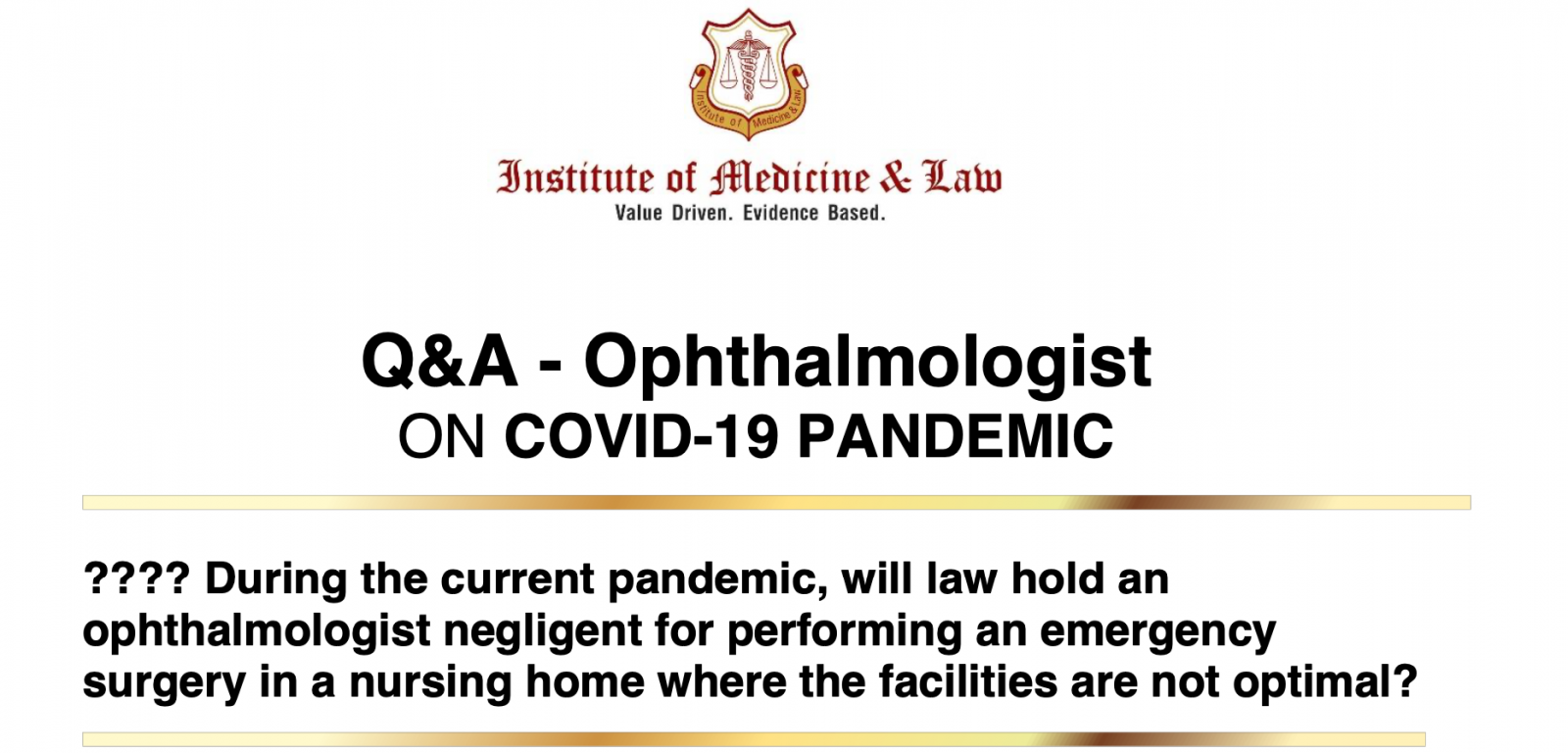Adv. Mahendra Kumar Bajpai
Advocate, Supreme Court
Normal situation
“Every doctor / hospital is bound to provide care to a patient in need of emergency care”
Emergency patient in current pandemic (eye injury / trauma)
- Law will take the current abnormal situation into account
- Law accepts a lower standard of care in such situations
In normal times, every doctor and hospital in this country is bound to provide care to a patient in need of emergency care. But these are trying times and law does take this fact into account. The standard of care that is expected by courts is lower and for obvious reasons. People are unable to move. Getting essentials and supplies is a problem. But then even in this lock down, a doctor may come across a patient who needs emergency care. A patient with injured eyes, trauma and so on. Such a situation poses a huge dilemma to the doctor.
Emergency surgery in a sub-optimal facility
Take a judgment call - Act in good faith / best interest of patient
Take into account
- The type of emergency
- Consequences of not performing surgery - Threat to life / limb eyes / vision
- Risk-benefit ratio
- Availability of any other facility / transportation facilities – To shift patient safely
“If there is no other viable option / surgery is absolutely necessary - Perform surgery without fearing law”
The answer to this dilemma cannot be given in black and white – It is a judgment call and the only defense of the ophthalmologist in the court of law will be acting in good faith, and acting in the best interests of the patient. In simpler terms, the ophthalmologist will have to take into account the type of emergency the consequences of not performing surgery – the threat to life, limb, eyes, vision. The risk-benefit ratio. You will have to take into account whether there is another facility nearby where the patient can be shifted safely. Whether the requisite means of transportation are available. And if there is no other viable option, and the surgery is absolutely necessary, then without fearing law, the same must be performed.
Do’s & Don’ts
- Take consent of patient / attendants
- Record in consent & medical records / communicate to patient - The compulsion to perform surgery in an emergency / limitation of the facility where the surgery will be performed
Two precautions must be kept in mind for legal safety. First, consent of the patient or the attendants must be taken and the compulsion to perform the surgery in an emergency, the limitations of the facility, must be clearly recorded. These facts must be clearly communicated to them. Second, even in the internal medical records of the hospital, such as surgery notes, these aspects must be elaborately recorded.

